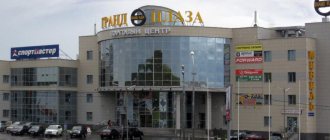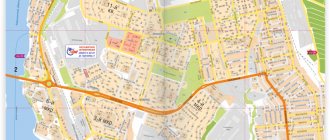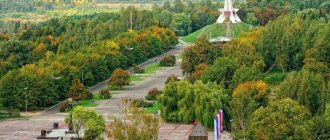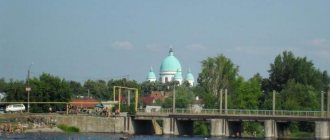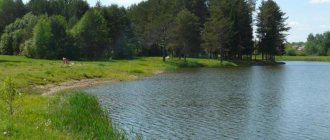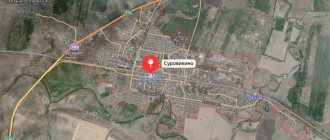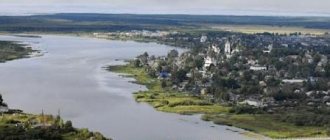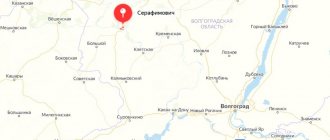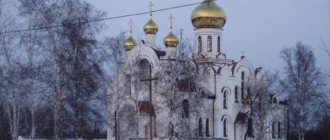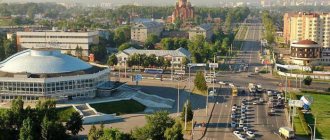Tula region
Russia includes 30
urban settlements
, including[1][2][3]:
- 19 cities, among which stand out: 2 cities of regional subordination ( highlighted in orange
), which, within the framework of the organization of local self-government, form (are included in) urban districts. - 17 cities of district subordination, of which, within the framework of the organization of local self-government, 3 are included in city districts and 14 are included in the corresponding municipal districts.
Population and cities of the Tula region
As of 2022, the region is home to 1.5 million people. Moreover, two thirds of its population are concentrated within the so-called Tula-Novomoskovsk agglomeration. About 75% of its residents live in the cities of the Tula region.
This is one of the most demographically unfavorable regions of Russia. It is the leader in natural population decline (6.8 people per 1000 inhabitants). There is an extremely low birth rate against the background of increased mortality and low life expectancy. In addition, young people are rapidly leaving the region, attracted by the proximity of Moscow.
The very first settlements on the territory of the modern Tula region arose 12,000 years ago. The oldest city in the region is Tula. It was founded in the 12th century (according to other sources, in the 14th century). At the end of the 17th century, this region turned into an important center of blacksmithing in Russia. Active industrial development of the region begins, which contributes to the creation of new cities and towns.
Today, there are 19 cities. But only two of them have more than 100 thousand inhabitants. All cities of the Tula region (in order of decreasing population) are listed below:
- Tula.
- Novomoskovsk.
- Donskoy.
- Aleksin.
- Shchekino.
- Nodal.
- Efremov.
- Bogoroditsk.
- Kimovsk.
- Kireevsk.
- Suvorov.
- Plavsk.
- Yasnogorsk
- Venev.
- Belev.
- Bolokhovo.
- Sticky.
- Soviet
- Chekalin.
Tula Airport
In Tula there is Klokovo Airport, a military airfield located on the northern outskirts of the city. During the period from 1959 to 1990, this airport had the status of a joint airfield. The distance from the city center to the airport is 7.5 km. Airport operating hours are from 10:00 to 18:00.
Currently the facility is operating in closed mode. The airport only accepts military helicopters and small aircraft. To enter the territory of the Klokovo airfield, you must obtain a special pass. Despite this, passengers can use the services of the airport: rent aircraft - a high-speed jet NG-5 and a small helicopter R-44.
Tula and her gingerbread
Tula is the administrative center, the largest and oldest city in the Tula region, home to almost half a million people. If you believe the Nikon Chronicle, it was founded back in 1146. Today it is an important industrial, cultural and scientific center of the country.
Few people know how rich Tula is in historical and architectural monuments. About 300 cultural heritage sites have been preserved within the city! The visiting card of Tula is the local Kremlin - a defensive stone fortress of the 16th century. In addition, in the city you can see several beautiful ancient temples and cathedrals.
In addition to architectural monuments, Tula is famous for three more things. These are weapons (it was the Tula Arms Factory that made a significant contribution to the defeat of Napoleonic troops in 1812), samovars and the famous gingerbread cookies. Tula gingerbread is one of the most famous gastronomic Russian souvenirs, which dates back to 1685. This is a flat and rectangular product covered with a transparent glaze. Inside the gingerbread contains filling (most often jam).
Bus stations of Tula
The bus station in Tula is located at Lenin Avenue, 94, next to Victory Square. The main building of the bus station is located next to the higher educational institution of Tula State University. The station is open every day around the clock. You can get to the bus station by public transport, which goes to the Stanislavsky or Ploshchad Pobedy stop. The bus station building houses a cozy cafe, a spacious waiting room, and luggage storage facilities. There are also several ticket offices and a help desk.
The most popular routes of regular buses at the Tula bus station: Tambov, Arsenyevo, Arkhangelskoye, Voronezh, Dubna, Volov, Gorlovka, Kaluga, Kireevsk, Kursk, Lipetsk, Moscow, Novomoskovsk, Orel, Plavsk, Smolensk, Teploye, Yasnogorsk, Chern.
Novomoskovsk and its "Nitrogen"
The city of Novomoskovsk, Tula region, is one of the cores of the Tula-Novomoskovsk agglomeration already mentioned in this article. It is home to about 125 thousand people. Novomoskovsk grew out of the Bobriki estate, which once belonged to the illegitimate descendants of Count Orlov and Empress Catherine. It became a city only in 1930.
In modern Novomoskovsk there are over a hundred different enterprises. The most important of them is Azot, the largest chemical plant in the country and one of the leaders in the production of ammonia and nitrogen fertilizers in the world. It is interesting to note that during the Second World War, the German command classified the city of Novomoskovsk as one of the most important industrial bases of the USSR. In this regard, all city enterprises, especially the chemical plant, were subject to heavy bombing.
However, Novomoskovsk Azot survived and was reborn. In 2015, the net profit of this enterprise amounted to 17.4 billion rubles.
Administrative division
The official name of the municipality is the municipality of the city of Tula. The status of the municipality is urban district. The area of the municipality of the city of Tula is 1495.56 square meters. km.
The hero city of Tula is the historically established administrative center of the Tula region, the location of state authorities and local governments. The first mention of the city of Tula according to the Nikon Chronicle dates back to 1146.
The population as of 01/01/2020 is 542.5 thousand people, the average annual number is 544.7 thousand people. The territory of the municipality is divided into territorial districts. In the municipal formation of the city of Tula there are five territorial districts: Zarechensky, Central, Station, Proletarsky, Sovetsky.
Tula is located in the north of the Central Russian Upland, on the river. Upa (tributary of the Oka). The Tula region borders the Moscow, Ryazan, Lipetsk, Oryol and Kaluga regions and covers an area of 26 thousand square kilometers. The length of the region from north to south is about 200 km, from west to east – slightly less than 190 km. The climate of the region is temperate continental, characterized by moderately cold and snowy winters and warm summers. Tula is located in the forest-steppe zone. To the south, chernozem soils predominate.
Demographic information
The municipal formation of the city of Tula is one of the most economically developed scientific, industrial and cultural centers of Russia. The population of the municipal formation of the city of Tula is 37.0% of the population of the Tula region.
The availability and characteristics of labor resources in the municipality of Tula determine the possibilities for its further economic development. The basis of the economy of the municipality is the industrial sector, with a historical specialization in the production of engineering and metallurgical products. Industrial production is represented by 119 enterprises (large and medium-sized) with a workforce of 72.1 thousand people, which is over 41% of the total number of working large and medium-sized enterprises of the municipal formation of the city of Tula. About 87% of industrial enterprises are concentrated in the regional center.
The average annual number of people employed in the economy in 2022 is 294.3 thousand people, of which:
— at large and medium-sized enterprises 176.1 thousand people;
— in small enterprises, including microenterprises, 55.2 thousand people.
The labor resources of the municipal formation of the city of Tula amount to 334.4 thousand people.
The role of small businesses is important in the economic and social life of a municipality. The number of people employed in this sector of the economy in 2022, including individual entrepreneurs, is over 73 thousand people.
The unemployment rate in the registered labor market in the municipality of the city of Tula as of 01/01/2020 was 0.29%, in the Tula region - 0.45%.
In 2022, 6,487 people applied for assistance in finding a suitable job. Through the mediation of the Tula Employment Center, during 2022, 3,233 citizens who applied for assistance in finding a suitable job found work (gainful employment), of which 2,398 people were employed through referrals from the employment service. The employment rate was 49.8% of citizens who applied for assistance in finding a suitable job.
Foreign economic activity
The development of international and foreign economic relations by local government bodies of the city of Tula and the business community creates conditions for the formation of effective trade, economic and social relations in the city of Tula. The city of Tula has sister cities and partnerships with the cities: Mogilev (Republic of Belarus), Villingen-Schwenningen (Germany), Albany (USA), Banska Bystrica (Republic of Slovakia), Chisinau (Republic of Moldova), Walbrzych (Republic of Poland), Maomin (PRC )
Export-import of goods and services of enterprises is quite diverse: from food industry products to mechanical engineering products and technology developments.
The Tula city administration is pursuing an active policy aimed at developing the foreign economic activity of city enterprises, one of the elements of which is the annual holding of contact and cooperation exchanges. The contact and cooperation exchange, held with the participation of business entities from the Republic of Belarus, has become traditional. The format of this event allows for business meetings, negotiations, and signing agreements aimed at developing foreign economic relations.
The Tula Chamber of Commerce and Industry is actively involved in the development of foreign economic activity of city enterprises, with the direct participation of which exhibitions, presentations, meetings, round tables and other events are held, in which both representatives of the Tula business community and representatives of foreign countries take part.
Transport infrastructure
The road network is the basis of the transport system of the city of Tula. Its condition and development determine the conditions of traffic flows and the level of service to the population.
The territory of the city is crossed or passes in close proximity by important strategic highways of federal importance: Moscow - Crimea, Kaluga - Tula - Mikhailov - Ryazan, and major railways Moscow - Donbass, Tula - Kozelsk, connecting Tula with other regions of Russia and countries near and far abroad. Railways branch out from the city to Moscow, Orel, Kaluga, Uzlovaya, Kozelsk.
Being a major railway junction, Tula has two railway stations - Moskovsky and Ryazhsky. Access roads depart from the stations to large industrial enterprises of the city: FSUE Mashinostroitelny, OJSC Tula Cartridge, Chamber of Commerce and Industry FSUE SNPP Bazalt, OJSC Instrument Design Bureau, OJSC Tula Armory, CJSC Tulazheldormash.
Tula is interconnected by a network of highways with other industrial centers of the Tula region - Shchekino, Novomoskovsk, Uzlovaya, Kireevsk, Donskoy, located within an hour and a half accessibility.
In the northern part of the city there is the Klokovo airport, which operated passenger flights until 1993. Currently, the airfield is used for military purposes.
The long-term development of the city involves both the effective decoupling of passenger transport flows and the planning of the development of existing and the placement of new industries, taking into account the optimization and pushing of freight flows to the periphery of the city with reference to transit highways.
In order to optimize the distribution of traffic flows and in connection with the progressive increase in the number of road transport, the construction of new city overpasses is envisaged.
City transport in Tula is represented by trams, trolleybuses and buses (including fixed-route taxis). The route network of the city of Tula includes 10 tram routes with a total length of 109.44 km, 10 trolleybus routes with a total length of 84.5 km, 18 bus routes with a total length of 387.3 km. In the city of Tula, 34 routes are served by commercial transportation. Transportation of passengers and luggage along the city route network is carried out by passenger transport in the amount of 1271 units of equipment
About 4,000 people are employed in the transportation process on public city municipal routes across all transport enterprises.
On average, trams carry about 60 thousand passengers per day, trolleybuses - about 70 thousand, buses - more than 82 thousand passengers. Passengers are transported annually: by buses - 27093.6 thousand people; electric transport - 44549.4 thousand people.
In order to develop the transport infrastructure of the city of Tula, paid parking space has been organized since October 2015 in the central part of the city in the territories of the Central, Soviet and Privokzalny territorial districts of the municipal formation of the city of Tula.
Education and human resources
In order to improve the quality and accessibility of education, expand opportunities for educational choice among students, create an effective, high-quality management system, in accordance with the Plan for optimizing the network of municipal educational institutions of the city of Tula, in 2015, a reorganization of municipal educational institutions was carried out with the subsequent creation of education centers.
Of the 234 educational institutions subordinate to the education department of the Tula city administration, 80 legal entities were created, including:
— 64 education centers implementing preschool and general education programs: 5 implement general education programs, 53 – preschool and general education, 6 – preschool education,
— 3 centers implementing continuing education programs,
– 1 evening (shift) general education institution – 1,
- 12 educational institutions retain their organizational and legal form: municipal budgetary preschool educational institution No. 4 - combined kindergarten, municipal budgetary preschool educational institution No. 24 - compensatory kindergarten, municipal budgetary preschool educational institution No. 143 - child development center - kindergarten "Tulyachok", municipal autonomous educational institution "Lyceum No. 1", municipal budgetary educational institution - Lyceum No. 2 named after Boris Anatolyevich Slobodskov, municipal budgetary educational institution "Plekhanovskaya primary secondary school", municipal budgetary institution of additional education "Center for Children's Creativity", municipal budgetary organization of additional education "Children and Youth Center", municipal budgetary organization of additional education "Center for Children's Creativity", municipal budgetary institution of additional education "House of Children's Creativity", municipal government educational institution "Interschool Training Center of the City of Tula".
The system of higher and secondary vocational education in the territory of the municipal formation of the city of Tula is represented by 15 state professional educational organizations and 15 educational organizations of higher education.
The training of blue-collar and engineering specialists by the city's educational institutions is carried out in all the main areas necessary for the city's economy today.
The personnel needs of city enterprises are ensured by the effective operation of the state order system for personnel training in the system, taking into account the needs of enterprises and the city organization for specialists and employees.
Physical education and sports
One of the areas of activity of the department for sports, culture and youth policy is the implementation of the strategy for the development of mass sports and physical culture in the municipal formation of the city of Tula, and the strengthening of the health and physical development of the city population, the further development of the sports infrastructure.
The system of physical culture and sports includes 330 institutions and organizations, the population coverage is 22%. (so in 2014 it was 20%)
Involvement in regular physical education and sports is carried out by organizing classes and physical education lessons in preschool institutions, general education institutions, secondary and higher educational institutions, as well as holding regional and city sports events by the Administration, sports federations, and children's sports schools.
More than 80 sports are being developed in the city.
Over the 11 months of 2015, 130 city sports events were organized and held on the territory of the municipality of Tula, these are city championships and championships, as well as competitions dedicated to the memory of famous Tula athletes and coaches, in which 25,896 thousand people took part. (compared to 2014 - 25,683 people)
In order to promote a healthy lifestyle in the city, the department for sports, culture and youth policy of the city administration holds city Spartakiads: educational institutions, city health camps, territorial public self-governments.
As part of the City Day, competitions in various sports are held: the “Mountain King” cycling competition, roller ski sprint competitions, street basketball, and “Strength of Tula” strength extreme sports, in which the strongest athletes of Tula and the Tula region took part.
For the fifth year, together with the Department of Education, municipal stages of the All-Russian competitions for schoolchildren “Presidential Sports Games” and “Presidential Sports Competitions” are being held, in which all secondary schools in the city of Tula take part. The team of Lyceum No. 2 became the winner in the municipal and regional stages and, speaking at the All-Russian stage of the “Presidential Sports Games” in Tuapse, took 1st place.
The national team of the Tula city administration takes part in traditional football tournaments of the Fatherland and Victory Day, among teams of deputies of the Tula Regional and Tula City Duma, the Government of the Tula Region and the media.
Currently, activities for the development of children's and youth sports in the city of Tula are carried out by 12 sports schools, of which 2 are regional and 10 municipal, in which, in accordance with the municipal assignment, 9,386 people are engaged. (last year this figure was 8,900 people.)
In municipal youth sports schools and sports schools for children and youth sports schools, 30 sports are developed, of which 14 are Olympic.
The most popular sports are athletics, volleyball, basketball, cycling, artistic and rhythmic gymnastics, sambo, judo, and football.
The material and technical base is a necessary and largely determining condition for the development of physical culture and sports. Work continues on the improvement of the stadium of the Arsenal Youth Sports School in the village. Oblique Mountain.
In September of this year, a sports and recreation complex was put into operation in the village of Leninsky.
The sports complex on the street opened its doors to athletes after a major renovation. Zhukovsky, 5 .
After reconstruction, the swimming pool on the street began operating. Garmonnaya, 37.
The investor Dimax LLC completed the construction of the 1st stage of the indoor tennis center “Academy of Tennis named after. A.A. Ostrovsky”, in 2016 the construction of the 2nd stage will continue - open courts, flat sports grounds: mini-football field, basketball and volleyball courts.
At the expense of investors (SLEP SHOT), the Ice Arena was put into operation on the street. Demyanova, 26-a.
Work is underway to overhaul the Metallurg stadium on the street. Kutuzova, 229
During 2015, work was carried out to prepare design and estimate documentation for the facility “Major repairs of the training base of the Stamp sports complex.”
At the stadium itself, the old stands were dismantled and several old wooden buildings were demolished. There are illuminated paths for cyclists. The length of the path is one kilometer. Archery classes and competitions were held at the stadium.
In the near future, competitions will be held to identify a construction company that will begin work on restoring the sports facility.
The overhaul of the swimming pool on the street was also completed. Gogolevskaya, 45a (Fitness – ).
Bringing the material and technical base into compliance with Russian standards requires further increased attention. This is especially relevant in connection with the implementation of the Decree of the President of the Russian Federation V.V. Putin dated March 24, 2014 No. 252 “On the All-Russian physical culture and sports complex “Ready for Labor and Defense” (GTO).” To implement the GTO complex, centers for passing GTO standards have been organized and equipped. The standards have been passed since February 2016 among schoolchildren, college and university students.
Youth policy
The involvement of the young population of the city of Tula in the process of forming and implementing socio-economic policy is implemented in the form of a youth policy, which is focused on Tula residents aged 14 to 30 years. The total number of young Tula residents is over 117,270 people.
In 2015, the implementation of youth policy in the city of Tula was carried out with the participation of nine municipal institutions, which include six youth centers in the territorial districts of the city, the youth patriotic named after. V.F. Rudneva”, “Center for socio-psychological assistance to youth “Chance”, health institution “Orlyonok”, which includes four health camps.
At the end of 2015, there were 140 recreational interest groups operating in the city with a total of 2,783 permanent students. 2,097 events in the field of youth policy were held with a total number of participants of 73,254 people.
One of the priority areas of work in the field of youth policy is the organization of children's recreation during the holidays.
The most popular forms of organizing recreation and health improvement have become: recreation in country and sanatorium health camps, health camps with daytime stay for children in educational institutions, participation in multi-day hikes, and tent camps.
During the summer period of 2015, 27,950 children were rehabilitated, which is 61.3% of the total number of children in the municipal formation of the city of Tula subject to rehabilitation (45,594 people).
Since 2006, the subprogram “Providing housing for young families” has been operating on the territory of the municipal formation of the city of Tula.
During the implementation of the subprogram, the living conditions of 664 young families were improved; 366.1 million rubles were transferred to them from budgets of various levels.
In 2015, 92 young families became holders of certificates of the right to receive social benefits for the purchase (construction) of housing; 15.7 million rubles were allocated from the federal budget for the implementation of the subprogram, 14.1 million rubles from the budget of the Tula region, from the budget of the city of Tula - 39.0 million rubles.
Culture
The cultural sphere of the municipal formation of the city of Tula has three components:
— Municipal institutions of culture and additional education for children;
— Providing services in the field of leisure, library science, museum and exhibition activities, concert performances, performances, additional education for children in the field of culture.
— Cultural events held by the municipality - concerts, festivals, city days, etc.
The city is doing significant work to preserve memorial objects in historical cemeteries. They define memorial zones in which the municipal Tula Historical and Architectural Museum searches, studies and restores artistically valuable and historically significant tombstones of the 18th and 19th centuries.
Stable funding of club cultural institutions in recent years has made it possible to significantly strengthen their material and technical base, implement large-scale sociocultural, artistic and creative projects, and expand the range of opportunities to satisfy the cultural needs of residents of the city outskirts.
In Tula there are children's art schools and an art school, with more than 5,000 students.
Art schools offer a wide range of educational services and implement programs for teaching children not only instrumental performance, traditional for music schools, but also educational programs for various types of arts: choral, choreographic and vocal art, artistic and theatrical creativity, and general aesthetic development of children.
Art schools graduate about 700 students annually, 7-10% of whom enter professional schools.
The Tula library system of the city of Tula is not only a territory of reading and information, but also a laboratory for creative communication and professional development, equipped with modern computer technology.
Tula Municipal Theater of Russian Drama "Hermitage" is the only municipal theater in Tula. Its history goes back more than 40 years. The Hermitage today is a cozy and hospitable theater that hosts performances for children and adults, apartment concerts by Russian and foreign performers, as well as exhibitions, festivals and creative evenings.
The Tula Concert Association is represented by six professional concert groups: the orchestras of Russian folk instruments "Yasnaya Polyana" and "Tula Secret", "Tula Chamber Orchestra", "Ensemble "City of Masters", the ensemble "Harmonica - Jazz" and the string quartet "Elegance".
The city of Donskoy and its shoes
Donskoy is located just ten kilometers south of Novomoskovsk. This small city (60 thousand inhabitants) was once proudly called the “mining capital of the region.” Brown coal was actively mined here. By the 70s, coal had run out, and the city of Donskoy quickly switched to other types of activities. In particular, shoe and leather goods factories appeared here, the products of which are known and appreciated far beyond the city limits.
Today, a fifth of the economically active population of Donskoy is employed in small businesses, which, by the way, provides 13% of income for the local budget. Thanks to small and medium-sized businesses, the city boasts the lowest unemployment rate in the region.
Automobile highways
Three federal highways pass through Tula:
- M2 "Crimea" is a federal highway that originates in Moscow and passes through Orel, Kursk, Tula, and Belgorod. The final destination of the road is the state border with Ukraine. It is part of the European route E105. The total length of the route is 700 km.
- P132 is a federal highway with a total length of 291 km. The highway passes through Kaluga, Ryazan, Mikhailov and Tula. Road surface: asphalt.
- E105 is a European route that starts in the Norwegian city of Kirkenes and passes through the following Russian cities: Murmansk, Orel, Tver, Veliky Novgorod, St. Petersburg, Belgorod, Moscow. The total length of the highway is 3,770 km.
Venev and his bell tower
The tiny town of Venyov with a population of 15 thousand people is located in the northeastern part of the region. Its inhabitants produce little: diamond tools and butter.
For 150 years now, the city of Venev can be identified from afar by the high and dilapidated Nikolaevskaya bell tower. This is the tallest building in the entire Tula region! The bell tower consists of four tiers and has a height of 75 meters. A unique architectural monument of the 19th century is located on the local Red Square. In addition to it, there are two more sacred objects on the square - the newly restored Epiphany Church and the Intercession Church, which, alas, is in ruins.
Urban settlements[ | ]
| № | Name | district[5] | municipal district / urban district[6] | population (persons) | founding/first mention | town status | coat of arms | former names |
| 1 | Arsenyevo | Arsenyevsky district | Arsenyevsky municipal district | ↗4622[4] | 1897 | 1966 | ||
| 2 | Volovo | Volovsky district | Volovsky municipal district | ↘3560[4] | XVIII century | 1970 | ||
| 3 | Dubna | Dubensky district | Dubensky municipal district | ↘5655[4] | 1740 | 1929 | ||
| 4 | Zaoksky | Zaoksky district | Zaoksky municipal district | ↘6196[4] | 1935 | 1970 | ||
| 5 | Kurkino | Kurkinsky district | Kurkinsky municipal district | ↘4856[4] | 1595 | 1968 | ||
| 6 | Novogurovsky | Aleksinsky district | working village Novogurovsky, GO | ↘3342[4] | 1946 | 1966 | ||
| 7 | Odoev | Odoevsky district | Odoevsky municipal district | ↘5134[4] | 1380 | 1959 | ||
| 8 | Pervomaisky | Shchekinsky district | Shchekinsky municipal district | ↘8829[4] | 1946 | 1950 | Gas village | |
| 9 | Glorious | Arsenyevsky district | Slavny, GO | ↘1796[4] | 1961 | 2008 | Tula-50 | |
| 10 | Warm | Teplo-Ogarevsky district | Teplo-Ogarevsky municipal district | ↘4838[4] | 19th century | 1971 | ||
| 11 | Black | Chernsky district | Chernsky municipal district | ↘6183[4] | 1566 | 1971 |
Settlements that have lost the status of an urban-type settlement[ | ]
Main article: Former urban-type settlements of the Tula region

